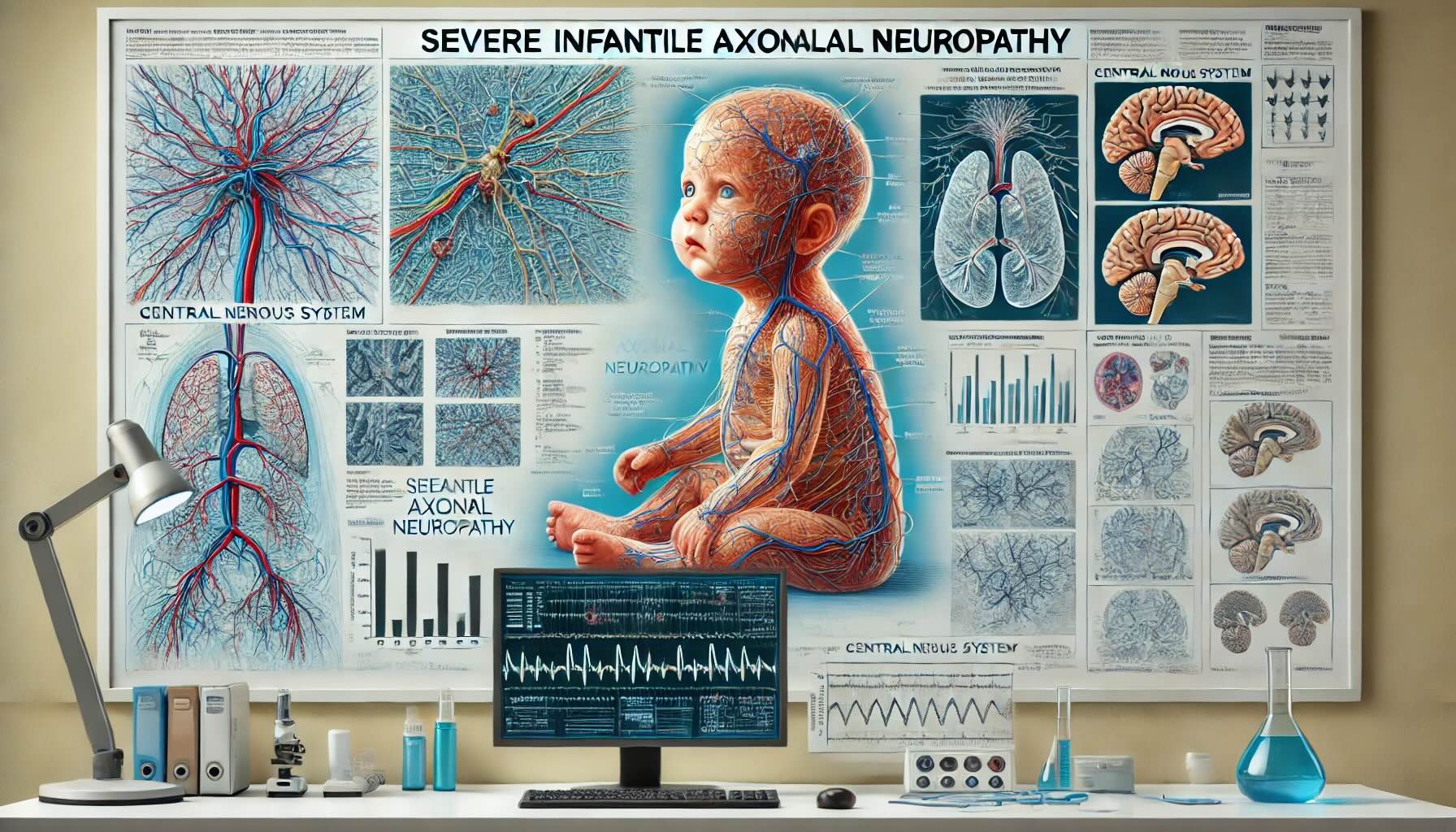
Severe Infantile Axonal Neuropathy is a rare genetic disorder affecting the peripheral nerves, which are responsible for transmitting signals between the brain, spinal cord, and the rest of the body. This condition typically manifests in infancy, leading to muscle weakness, loss of motor skills, and sensory issues. Symptoms often include difficulty breathing, swallowing, and severe muscle atrophy. Genetic mutations in specific genes, such as the GDAP1 gene, are usually the culprits behind this disorder. Diagnosis involves genetic testing, nerve conduction studies, and clinical evaluations. Treatment options are limited and primarily focus on managing symptoms and improving the quality of life. Early intervention with physical therapy, respiratory support, and nutritional management can make a significant difference. Understanding this condition is crucial for affected families and healthcare providers.
Key Takeaways:
- Severe Infantile Axonal Neuropathy (SIAN) is a rare genetic disorder affecting infants, causing muscle weakness and delayed motor skills. Early recognition and support are crucial for affected individuals and their families.
- Genetic testing and counseling are essential for families with a history of SIAN. While there is no cure, treatments like physical therapy and orthopedic devices can improve the quality of life for affected children.
What is Severe Infantile Axonal Neuropathy?
Severe Infantile Axonal Neuropathy (SIAN) is a rare genetic disorder affecting the peripheral nerves. These nerves are responsible for transmitting signals between the brain, spinal cord, and the rest of the body. Understanding this condition can help raise awareness and support for affected individuals and their families.
- SIAN is a type of Charcot-Marie-Tooth disease, specifically classified as CMT2.
- It primarily affects infants and young children, often presenting symptoms within the first year of life.
- The disorder is caused by mutations in the GDAP1 gene, which plays a crucial role in nerve function.
- SIAN leads to the degeneration of axons, the long threadlike part of a nerve cell along which impulses are conducted.
- Symptoms include muscle weakness, loss of reflexes, and difficulty with motor skills.
Symptoms and Diagnosis
Recognizing the symptoms early can lead to a quicker diagnosis and better management of the condition. Here are some key facts about the symptoms and diagnosis of SIAN.
- Infants with SIAN may exhibit hypotonia, or decreased muscle tone, making them appear "floppy."
- Delayed motor milestones, such as sitting, crawling, and walking, are common in affected children.
- Muscle atrophy, or wasting, can occur, particularly in the lower limbs.
- Sensory loss, including reduced ability to feel pain or temperature changes, may be present.
- Electromyography (EMG) and nerve conduction studies are essential tools for diagnosing SIAN.
Genetic Factors
The genetic basis of SIAN is a critical area of research. Understanding these factors can help in developing potential treatments.
- SIAN is inherited in an autosomal recessive pattern, meaning both parents must carry a copy of the mutated gene.
- Genetic testing can confirm the presence of GDAP1 mutations.
- Carrier parents have a 25% chance of passing the disorder to their child.
- Genetic counseling is recommended for families with a history of SIAN.
- Research is ongoing to identify other potential genetic contributors to the disorder.
Treatment and Management
While there is no cure for SIAN, various treatments and management strategies can improve the quality of life for affected individuals.
- Physical therapy can help maintain muscle strength and flexibility.
- Occupational therapy assists children in developing daily living skills.
- Orthopedic devices, such as braces or splints, may be used to support weakened limbs.
- Pain management strategies, including medications and alternative therapies, can alleviate discomfort.
- Regular monitoring by a multidisciplinary team of healthcare professionals is essential.
Prognosis and Support
Living with SIAN can be challenging, but understanding the prognosis and available support can make a significant difference.
- The severity of SIAN can vary widely among individuals.
- Some children may experience a rapid progression of symptoms, while others have a slower course.
- Life expectancy can be affected, but many individuals live into adulthood with proper care.
- Support groups and organizations provide resources and community for families affected by SIAN.
- Ongoing research offers hope for future treatments and potential cures.
Final Thoughts on Severe Infantile Axonal Neuropathy
Severe Infantile Axonal Neuropathy (SIAN) is a rare, complex condition that affects infants' nervous systems. Understanding its symptoms, causes, and treatments can help families and medical professionals manage this challenging disorder. Early diagnosis is crucial for better outcomes, as it allows for timely intervention and support. Genetic counseling can provide valuable insights for families with a history of SIAN, helping them make informed decisions about future pregnancies.
While there's no cure yet, ongoing research offers hope for new treatments and therapies. Staying informed and connected with support groups can make a significant difference in coping with SIAN. Remember, knowledge is power. By spreading awareness and supporting research, we can work towards a brighter future for those affected by Severe Infantile Axonal Neuropathy.
Frequently Asked Questions
Was this page helpful?
Our commitment to delivering trustworthy and engaging content is at the heart of what we do. Each fact on our site is contributed by real users like you, bringing a wealth of diverse insights and information. To ensure the highest standards of accuracy and reliability, our dedicated editors meticulously review each submission. This process guarantees that the facts we share are not only fascinating but also credible. Trust in our commitment to quality and authenticity as you explore and learn with us.
